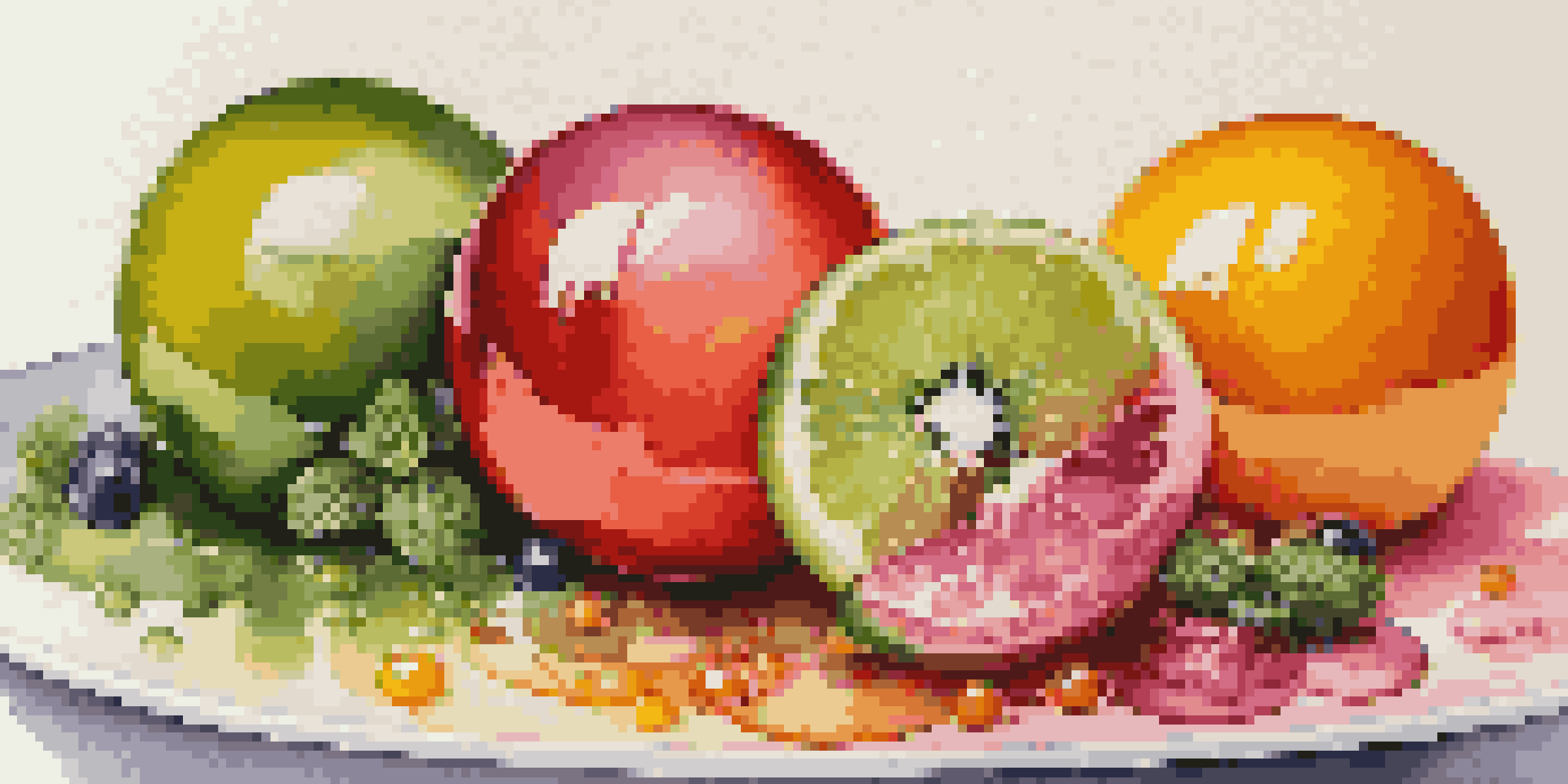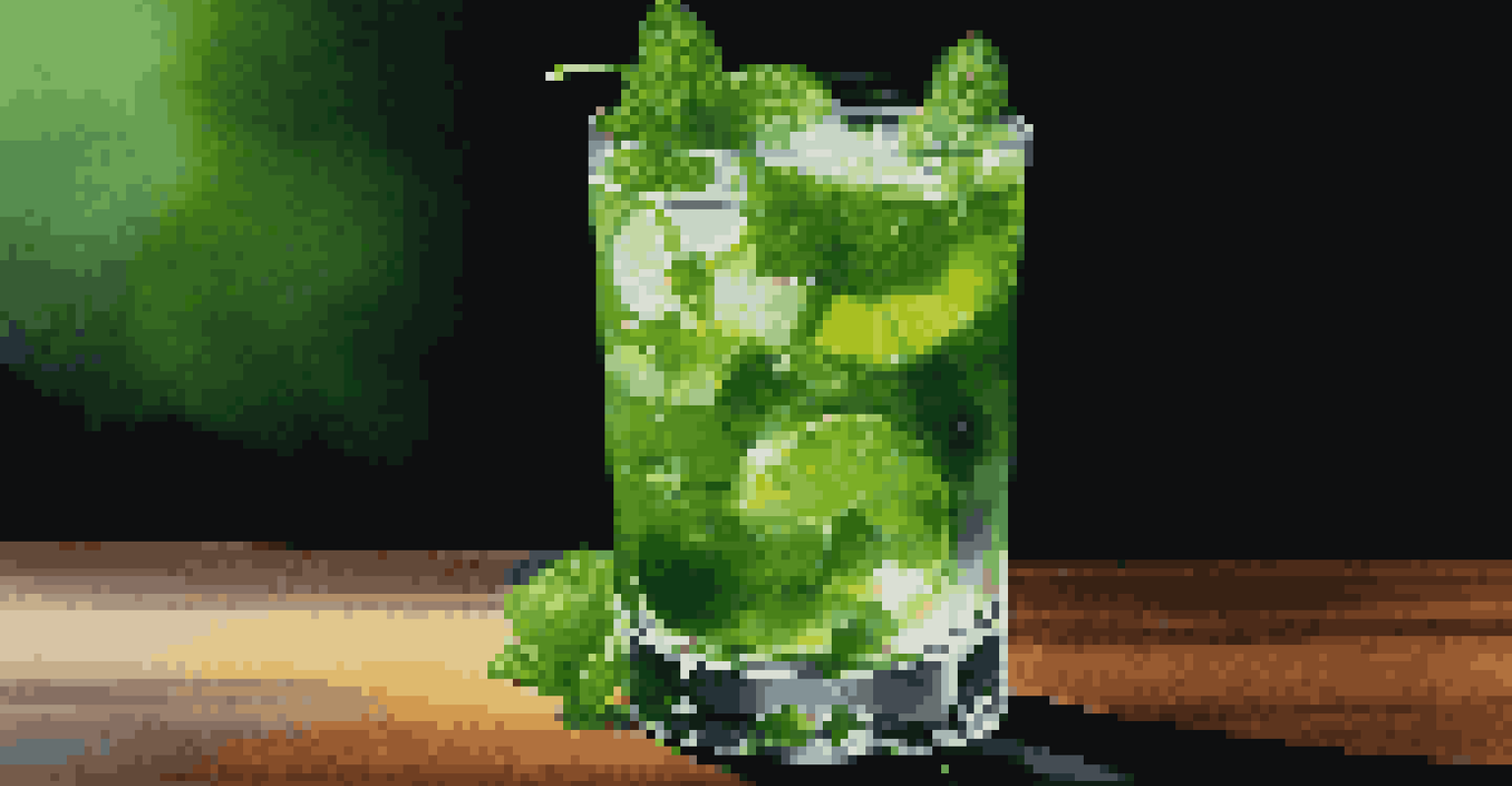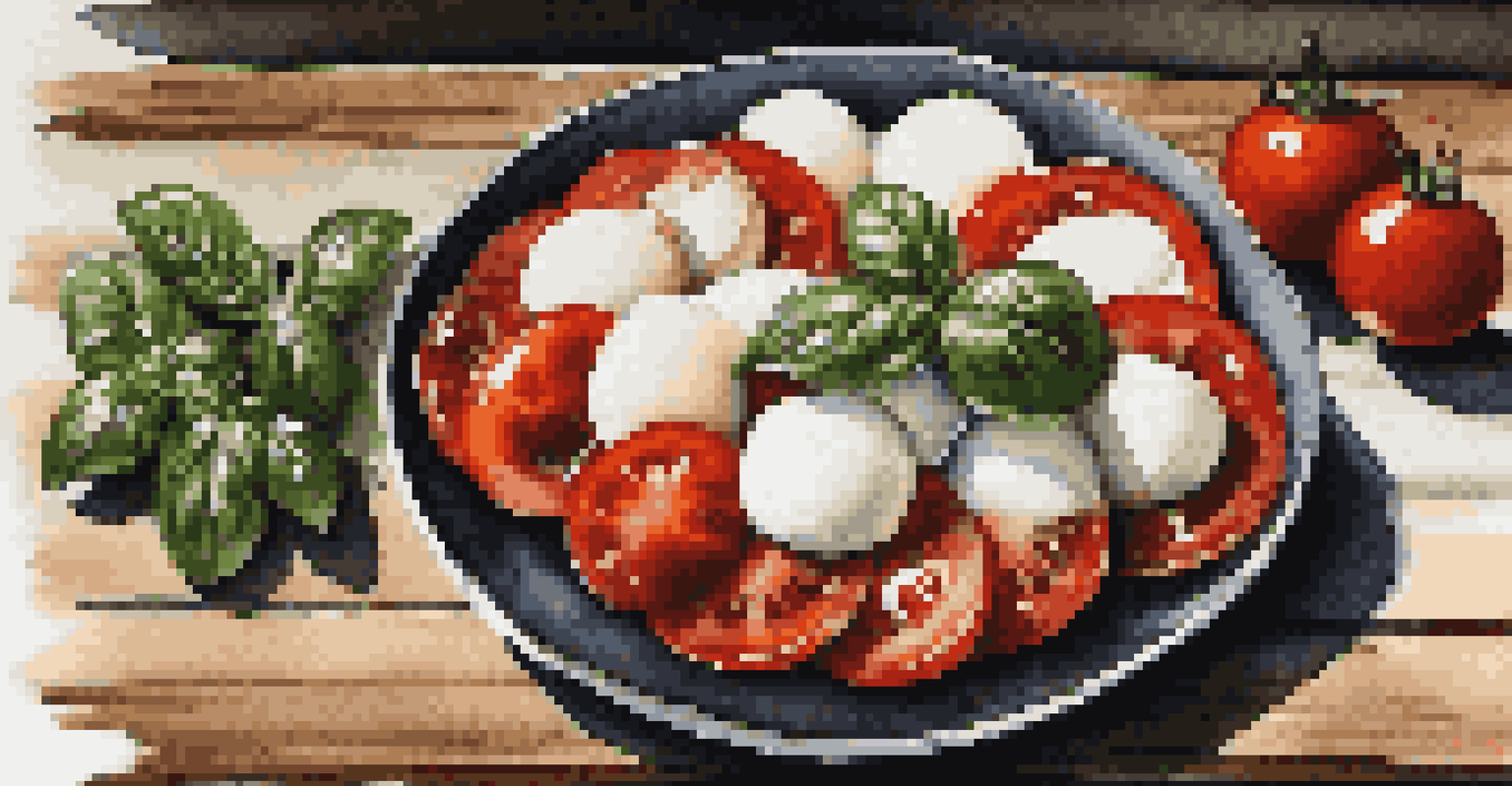Exploring Spherification: Techniques for Novel Culinary Delights

What is Spherification in Culinary Arts?
Spherification is a modern culinary technique that transforms liquids into small, gel-like spheres. This process allows chefs to encapsulate flavors in a visually striking manner, making dishes not only delicious but also a feast for the eyes. Imagine popping a tiny sphere filled with fruit juice in your mouth, releasing a burst of flavor—it's an experience that delights the senses.
Cooking is like love. It should be entered into with abandon or not at all.
At its core, spherification uses a reaction between sodium alginate, derived from algae, and calcium chloride or calcium lactate. When these ingredients meet, they create a gel-like membrane that forms the sphere. This technique has gained popularity in molecular gastronomy, where science meets culinary creativity to push the boundaries of traditional cooking.
Chefs around the world are embracing spherification to surprise diners with unexpected textures and flavors. From savory to sweet, the possibilities are endless, allowing for a playful exploration of ingredients and presentations.
The Science Behind Spherification
Understanding the science of spherification is essential for achieving the perfect spheres. The key reaction involves the formation of a gel when sodium alginate is mixed with a calcium solution. This gelation creates a thin membrane that holds the liquid inside, resulting in those delightful bursts when you bite into them.

Temperature and timing play crucial roles in the spherification process. The liquid must be at the right viscosity, and the reaction time should be carefully monitored to ensure the membrane forms correctly. For instance, if left too long, the spheres may burst, while too short a time results in incomplete gel formation.
Spherification Transforms Flavors
This technique encapsulates liquids into gel-like spheres, enhancing both taste and visual appeal.
Experimentation is crucial—it allows you to tweak the ratios and conditions until you find the perfect balance. This scientific approach not only enhances your skills but also inspires creativity in the kitchen.
Types of Spherification Techniques
There are two primary types of spherification: direct and reverse. Direct spherification involves mixing sodium alginate into the liquid you want to encapsulate, then dropping it into a calcium bath. This method is perfect for liquids that will be served immediately, like fruit juices or flavored oils.
The only real stumbling block is fear of failure. In cooking, you’ve got to have a what-the-hell attitude.
On the other hand, reverse spherification is ideal for ingredients that need to be stored or served later. Here, calcium is mixed into the liquid, and the mixture is then dropped into a sodium alginate bath. This technique allows for thicker, more stable spheres that can hold their shape over time, making it perfect for sauces or creamy mixtures.
Both methods open up a world of creativity, enabling chefs to craft unique culinary experiences. Each technique has its advantages, and understanding when to use each can elevate your culinary creations.
Essential Ingredients for Spherification
To get started with spherification, you'll need some essential ingredients. Sodium alginate, a thickening agent derived from brown seaweed, is crucial for creating the gel-like spheres. Calcium chloride or calcium lactate are also necessary, as they trigger the gelling process when mixed with sodium alginate.
In addition to these key ingredients, you'll want a variety of liquids to experiment with. Fruit juices, flavored broths, and even cocktails can all be transformed into spheres. The choice of liquid greatly impacts the final flavor and presentation, so don’t hesitate to get creative.
Science is Key to Spherification
Understanding the gelation process between sodium alginate and calcium is crucial for creating perfect spheres.
Having a precise scale and measuring tools is also important for success. Accurate measurements ensure that the ratios of ingredients are just right, leading to consistent and delightful results.
Tools Needed for Spherification
While spherification can be done with basic kitchen tools, having the right equipment makes the process smoother. A precision scale is essential for measuring your ingredients accurately, ensuring that your ratios are spot on for the best results. Additionally, small spoons or pipettes are handy for dropping the liquid into the calcium bath.
A blender or immersion blender can help achieve the right viscosity for your liquids, especially if you're incorporating other ingredients like fruit purees. And don’t forget about the calcium bath—having a shallow dish or bowl makes it easier to create the spheres without them sticking together.
Investing in these tools can simplify the spherification process and lead to more consistent outcomes, allowing you to focus on creativity rather than logistics.
Creative Applications of Spherification
The applications of spherification in the culinary world are endless. Chefs can use this technique to create unique appetizers, desserts, and even cocktails. For example, imagine serving a dish with savory tomato spheres that burst with flavor, paired with fresh basil and mozzarella—an exciting twist on a classic caprese salad.
Desserts are another fantastic canvas for spherification. Think of mango or passion fruit spheres served atop a creamy panna cotta, adding a burst of tropical flavor that enhances the overall experience. The visual appeal of these dishes not only tantalizes the taste buds but also creates a memorable dining experience.
Versatile Techniques for Chefs
Both direct and reverse spherification methods offer unique ways to elevate culinary creativity and presentation.
Cocktails can also benefit from this technique. Consider serving a mojito with mint and lime spheres that burst in your mouth, adding an unexpected twist to a classic drink. Spherification not only impresses guests but elevates the entire dining experience.
Tips for Mastering Spherification
As with any culinary technique, mastering spherification takes practice and experimentation. Start with simple liquids and gradually work your way up to more complex mixtures as you gain confidence. Don’t be afraid to make mistakes; they often lead to valuable learning experiences and unexpected delights.
Keep notes on your ratios, temperatures, and results. This will help you refine your technique and recreate your successes in the future. Plus, documenting your experiments can inspire new ideas and combinations to try.

Lastly, be patient and enjoy the process! Spherification is as much about creativity and exploration as it is about technique. Embrace the fun and surprise that comes with creating these delightful culinary spheres.